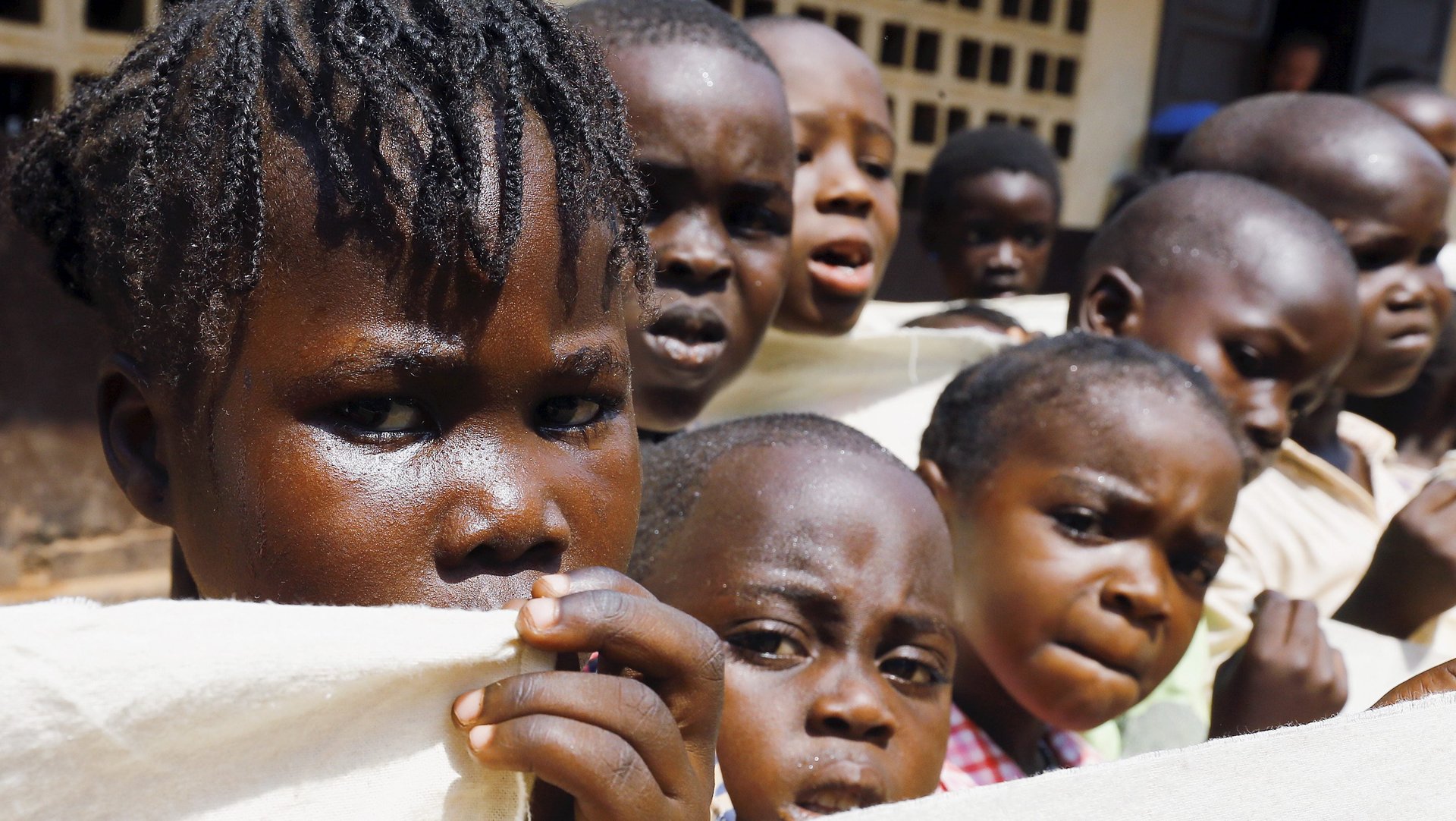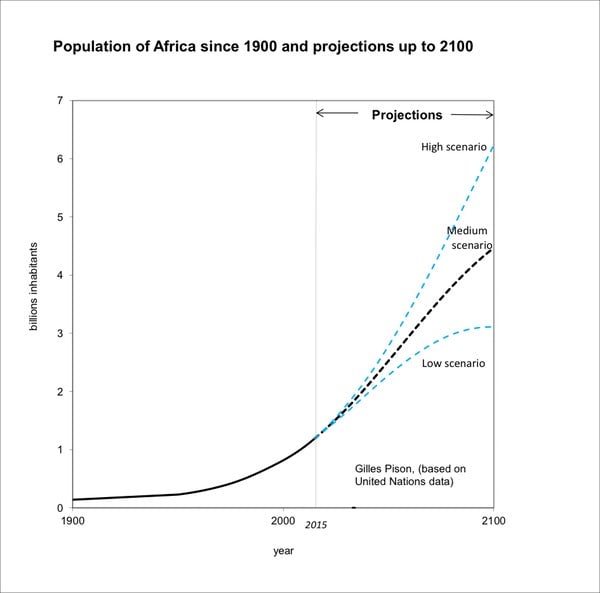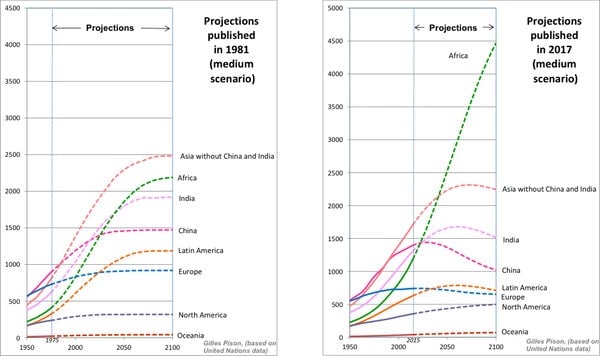There’s a strong chance a third of all people on earth will be African by 2100
The population of Africa is increasing rapidly. From an estimated 140 million in 1900, it had grown to a billion by 2010. According to United Nations “medium scenario” projections, this figure will rise to 2.5 billion in 2050 and more than 4 billion in 2100 (see figure below).


The population of Africa is increasing rapidly. From an estimated 140 million in 1900, it had grown to a billion by 2010. According to United Nations “medium scenario” projections, this figure will rise to 2.5 billion in 2050 and more than 4 billion in 2100 (see figure below).
Today, one out of six people on Earth live in Africa. These same projections predict that the proportion will be one in four in 2050 and more than one in three by 2100.
What are the reasons for this rapid growth? Will it continue? Will the African population inevitably quadruple by the end of the century?

The reasons for rapid growth
The population of Africa is increasing because births outnumber deaths four to one. While African mortality is the highest in the world, it has decreased in recent decades, following a pattern already observed on other continents.
Fertility has also declined. African women have 4.5 children on average – as opposed to 6.5 forty years ago and 5.5 twenty years ago. Here too, the same trend has been established on other continents. Women in Asia have just 2.1 children on average, in Latin America 2.0 children, in North America 1.9 and in Europe 1.6.
This combination of declining mortality and relatively high fertility is the driver of rapid population growth in Africa. Even if fertility would continue to decline, as assumed by the United Nations medium scenario, it will not bring down the growth rate in the near future, let alone halt population growth. This is because of “demographic inertia”.
Even if African fertility were to fall right now to the level in Europe and China (1.6 children per woman) – a highly unlikely scenario – the population would continue to increase for several decades, reaching 1.6 billion in 2050. This is because Africa has a very high proportion of young adults of reproductive age (15-49). Even if each one had very few children, the number of births would remain high.
The population projections published by the United Nations in 1981 predicted that the world population would reach 10.5 billion in 2100 under the medium scenario. The latest projections published in June 2017 give a figure of 11.2 billion—0.7 billion higher.
While the world total is only slightly higher, it conceals a radical change in population distribution across the different continents.
In 1981 the population of Asia was projected to reach 5.9 billion by 2100, but in 2017 the figure was revised downward to 4.8 billion. For Latin America, likewise, the figure of 1,187 million in 2100 was adjusted down to 712 million (a decrease of about 40%). For Africa, on the other hand, the 1981 projections gave a population of 2.2 billion, while in 2017 this figure is doubled, to 4.4 billion (see figure below).

Comparison of population projections published in 1981 and 2017.
Recent surprises in fertility trends
The first surprise came 30 years ago, when surveys revealed the unexpectedly rapid pace of fertility decline in many countries of Asia and Latin America. In response to this new trend, the United Nations made substantial downward revisions to their demographic projections for these continents.
A second more recent surprise concerns intertropical Africa. Fertility decline in this region was expected to begin later than in Asia and Latin America due to slower social and economic development, but it was assumed that the rate of decrease would ultimately match that observed in other regions of the Global South.
This is indeed the case in North and southern Africa, but not in intertropical Africa where the fertility decline is occurring more slowly. This explains the upward revision of projections for Africa, a continent which could be home to more than a third of the world’s population by 2100.
What will happen in the coming decades?
These figures are projections and the future is obviously not written. However, demographic projections are quite reliable for predicting population size in the short term future, i.e., over periods of 10, 20 or 30 years.
The majority of men and women who will be alive in 2050 have already been born, their numbers are known, and we can estimate quite accurately the share of humans living today who will have died by that year.
The additional number of newborns can also be estimated because the women who will give birth to children in the next 20 years are already born, their numbers are known and the number of children they will have can also be predicted, again with relative accuracy.
Africa’s population will inevitably double by 2050 as a consequence of unstoppable demographic inertia. Depending on its speed of economic development in coming years, the improvement in women’s education and the implementation of family planning policies, the population of Africa in 2100 will be three, four, five or six times larger than it is today.
For more information, see “The population of the world (2017)”, issue no. 547 of Population and Societies (downloadable free of charge).
Gilles Pison, Professeur au Muséum national d’histoire naturelle et chercheur associé à l’INED, Muséum national d’histoire naturelle (MNHN) – Sorbonne Universités
This article was originally published on The Conversation. Read the original article.